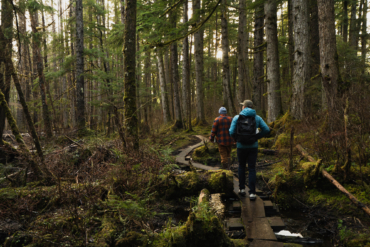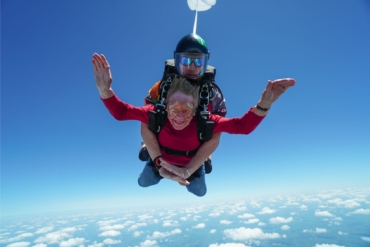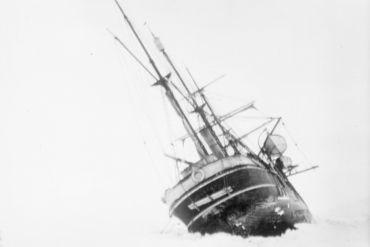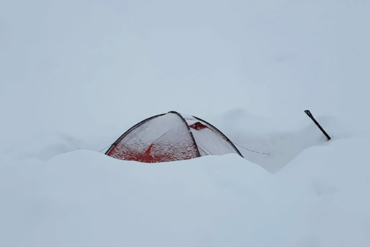On the re-start, Helly Hansen Prunesco’s British contingent pushed the pace on the mountain bike leg and methodically put distance between themselves and Easy Implant on the way to checkpoint No. 2. The field soon headed into an immense trekking section — a crucial leg that would later separate the winners from the runners up. For the trek, teams were tasked to navigate with just a compass and 1:100,000-scale satellite photo maps through a mix of gnarly, half-rotten trees, squishy bogs and towering cliffs.
Helly Hansen Prunesco found it almost impossible to discern the way, describing the section as “navigating by Braille.” The team’s youngest member, Bruce Duncan, became weary as he pushed the pace. “I was pretty toasted,” he said. “I wasn’t thinking straight at that point, I didn’t eat and drink enough, I got really hypothermic, and I was up for jacking it in.”
It was a low point, but with clear heads in the early morning, the team worked out their location and were out of the forest at checkpoint No. 3 by day break on the third day of competition. The team took to their bikes in heavy rain down muddy dirt tracks then hit coast roads, where they were blown down repeatedly by howling ocean winds.

Consequences of a thorny trek
Team Easy Implant found their way out of the trek three hours behind Helly Hansen Prunesco. Team Spirit Canada completed the trek soon after, but a poor route choice forced them to swim a fast-flowing river when they slipped while crossing on foot. It left them cold and tired, and they decided to rest overnight during the ride to the checkpoint.
The lead two were forced to stop overnight at checkpoint No. 4, with kayaking not permitted in darkness, so each team’s race clock stopped on arrival and Helly Hansen Prunesco banked a five-hour lead, ate well and were well rested before hitting the Seno Otway, a large inland sound, the following morning on day four of the race.
Easy Implant began the kayak just an hour later, just as Canada Spirit arrived at the checkpoint. The third-placed team had raced hard to complete the biking section but missed the kayak cut-off and, with their race clock stopped, had an entire day of rest before the next day’s kayak start, where they were joined by Calleva, Buff, and Trespass, the remaining three teams now dropped from the course.
The Seno Otway was rough and white-capped, with swells of around two or three metres, but Helly Hansen Prunesco and Easy Implant made it across the open stretch and down Wickhand Fjord, past jagged mountain scenery, to reach the portage, where they dragged the kayaks 18km across marshy ground and dense jungle.

Overview Race Map
Helly Hansen made the end of the portage quickly, in around five hours, but not in time to start the kayak before dark, forcing them to spend the night in a bivouac as the slower Easy Implant team caught up. They were virtually neck-and-neck by checkpoint No. 5, at the start of day five, and the start of what was predicted to be the toughest trekking section ever undertaken in an expedition race.
Indeed, the race organizers — perhaps the only other humans ever to have trekked in the area — admitted it was extreme, with only one safe path to get through. Notes in the race’s route book described one valley as “the only safe way out” and asked for “careful evaluation” of mountain rivers that could be dangerous to cross.
continued on next page. . .






